Welcome to our World’s Greatest Artist Study! This month we’re focusing on Jackson Pollock. I think so far, this style of “Action Painting” has by far been a favorite of the kids.
Jackson Pollock was born in Cody, Wyoming in 1912. He was an influential American painter and a major contributor to the abstract expressionist movement. He began to study painting in 1929 at the Art Students’ League in New York. While he experimented with several different styles of painting, he is most well known for “action painting” . Instead of painting on an easel, Pollock taped his canvas to the floor then would stand above his canvas and literally drip and splash paint from a can onto the canvas. Though he was subject to much criticism, by the 1960’s he was recognized as the most important figure in the most important movement of this century of American painting. No. 5, 1948 is currently the most expensive painting ever sold for approximately $150.6 million adjusted US dollars. Visit Jackson Pollock.com for more information and artwork.
If you haven’t seen the previous posts, this year for art we are studying 8 different world famous artists. We have chosen to do art twice a week, and we’ll cover one artist each month. We’re currently using my World’s Greatest Artists Vol. 1 curriculum!
We took a few lessons and discussions to read through the Jackson Pollock World’s Greatest Artist series by Mike Venezia. We talked about all the different styles that Pollock was known for, and took lots of time to familiarize ourselves with and critically assess his works of art.
As we learn how to critically assess a piece of artwork, here are some of the things we discussed for each painting:
- Describe what we see in this work of art.
- How do they think the artist was feeling when they created it? Why?
- How it makes your student feel looking at it?
- Does the use of color help convey mood?
- Is there something unusual or unique about the piece of art?
- What is going on in the work, is there a story that can be told about it? (Each of them had a few minutes to share their version of what they thought was going on in the story with us.)
- What kind of style and medium did the artist use in this work?
- Overall do you like the painting, if so yes, why? If no why not?
After going over all of Jackson Pollock’s works in the book, we put the paintings into the mini-book, then added our mini-book to our World’s Greatest Artists lap book.
We also filled in our artist flashcard and added that to our lap book.
I used my Xyron 900 along with Magnetic Laminate to make it into a magnetic puzzle. Each of the kids took a turn at the Pollock puzzle included in the curriculum download. This one was actually kind of hard!
Finally we went outside and took our shot at “action painting”. I have a big crate of tempera paints from Lakeshore Learning that we use for our projects. The kids managed to use up quite a bit of it for this activity, so you might want to plan for that as well.
I highly recommend doing this outside, and I put large t-shirts on all the kids to protect their clothes. Don’t worry honey, I covered our lawn with some plastic so no grass was harmed during this activity!
I did instruct the kids not to just dump a bunch of paint on the canvas, but to actually try to show their movement in the strokes.
I think they did quite a good job, and the finished product was really cool!
If you’re not quite up to this large project, you can get the same effect on a smaller scale by using shoelaces dipped in paint and dragging them along a normal sized sheet of paper.
Click here to see the other World’s Greatest Artists that we’ve covered so far!
Click here to get The World’s Greatest Artists Vol. 1


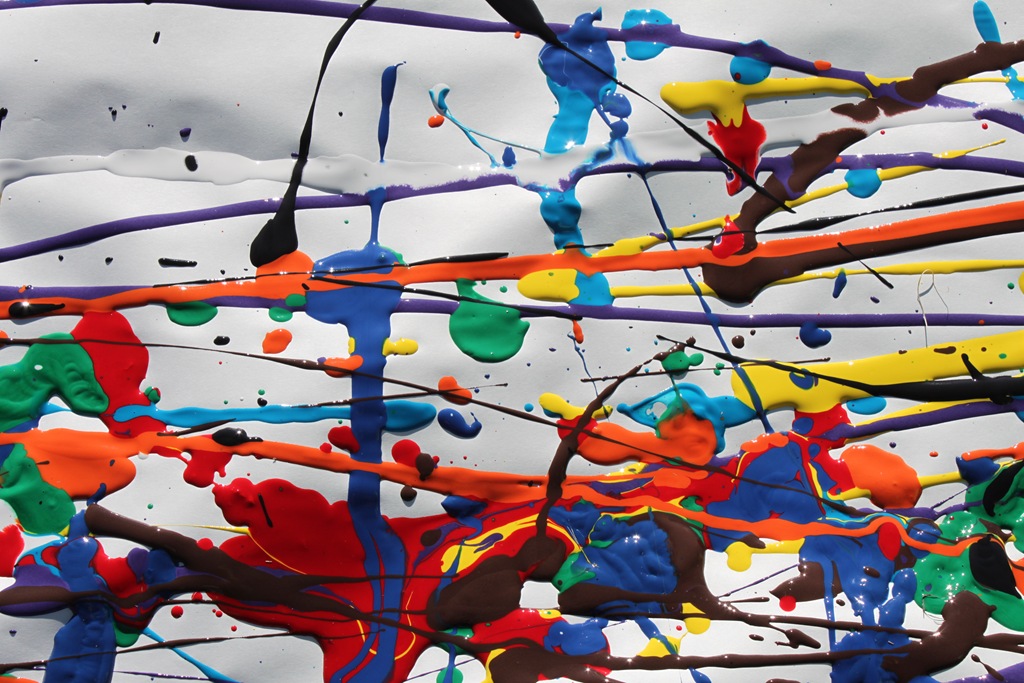

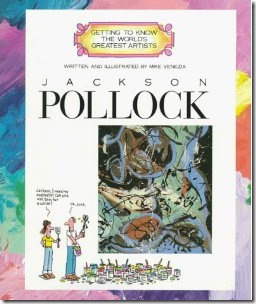
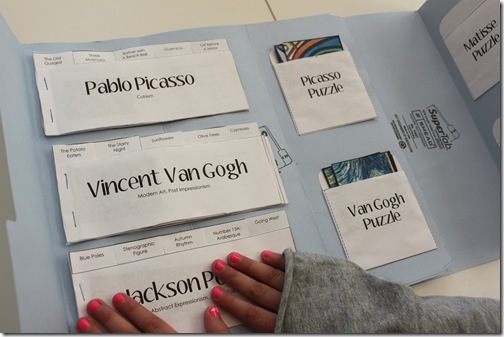
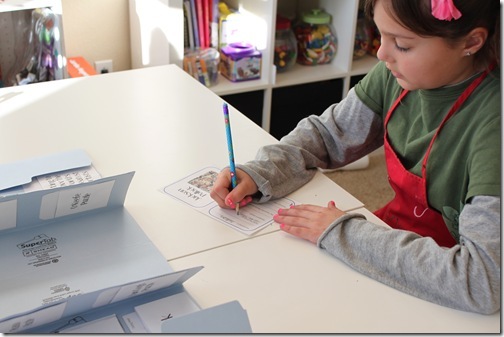
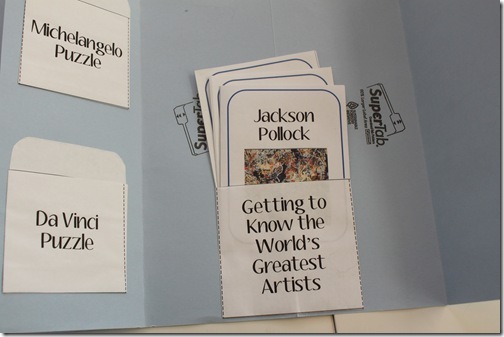
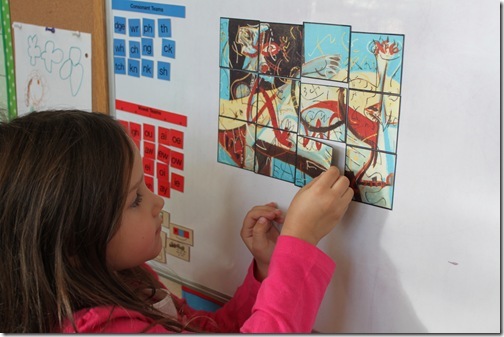
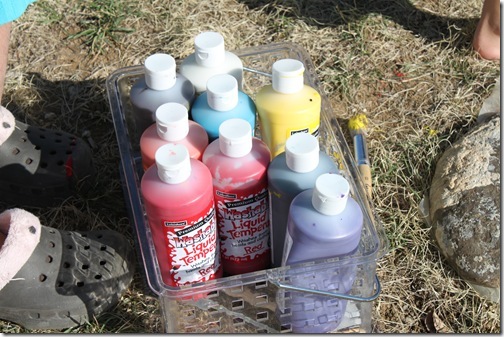
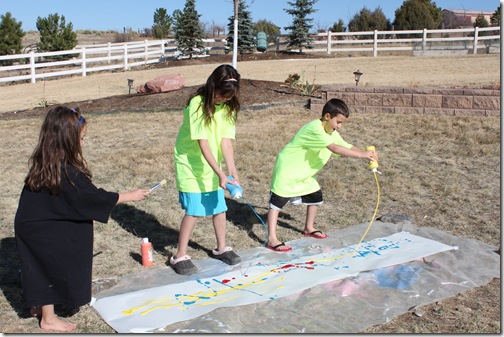
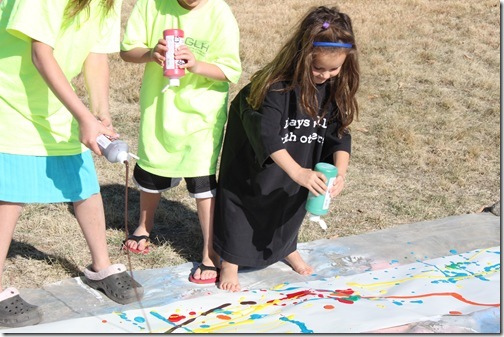
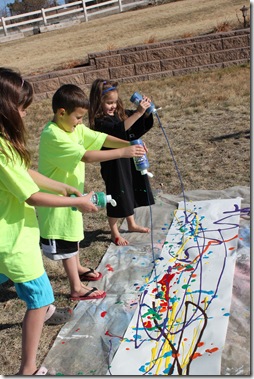
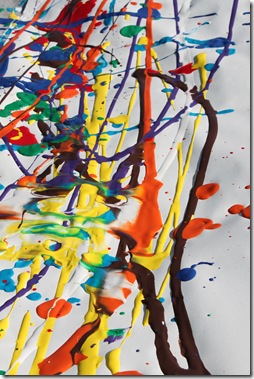

I started using this curriculum recently and for someone who is artistically challenged, I Love It! We began with Picasso and are moving on to Pollack. And, our local High Museum of Art has a Modern Artists Show with a few on display right now so we will be taking a field trip too!
I love this!!! How fun…& great job teaching!